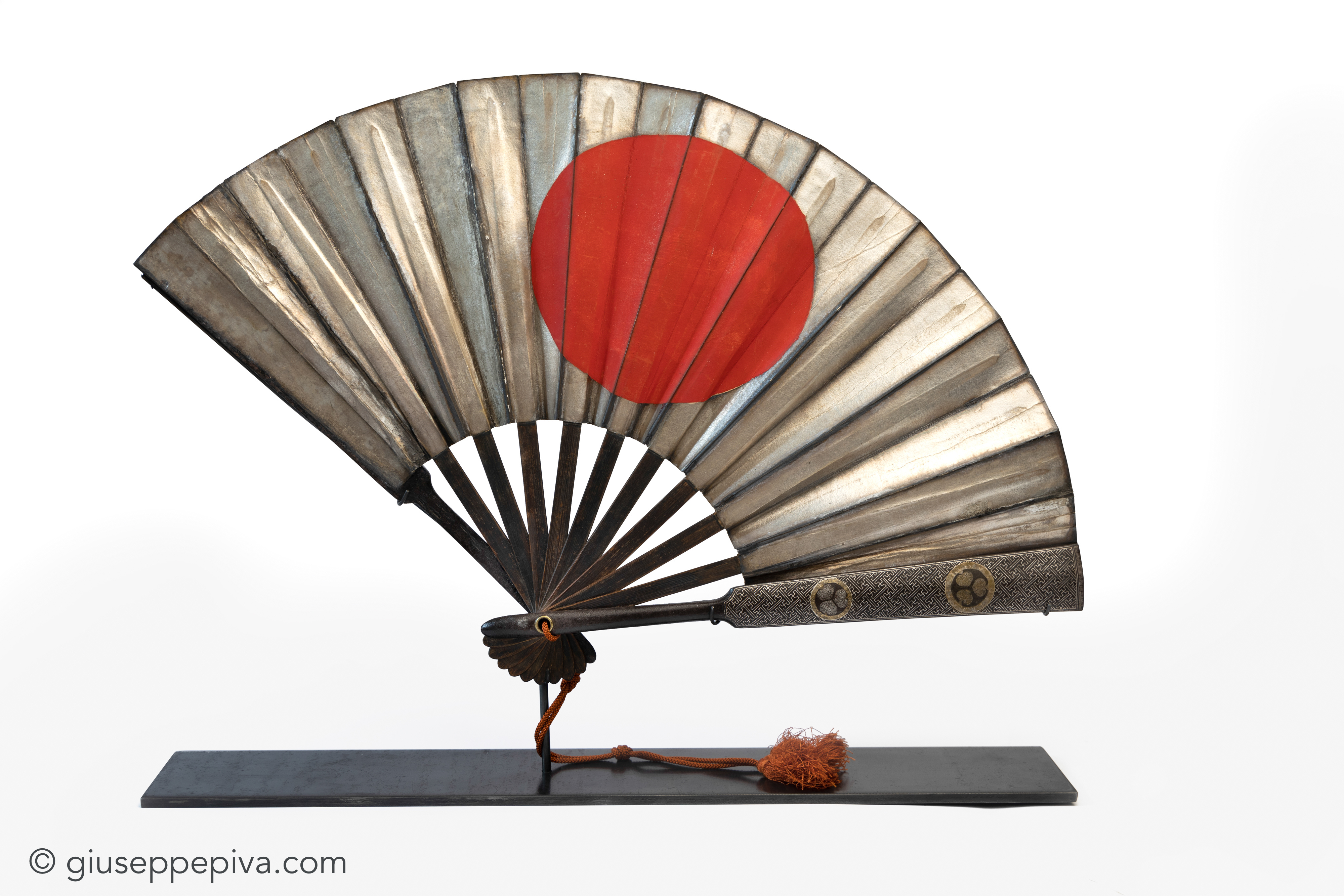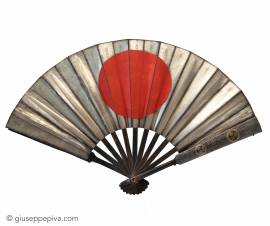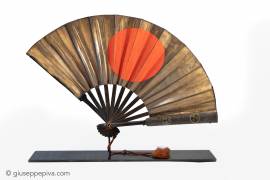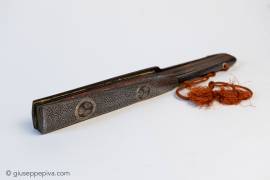Tessen
Fighting fan
Mid Edo Period (1615 - 1867)
Iron, paper with pigments and bamboo.
Menhari-gata (opening fan), sensu-gata (traditional shape)
Lenght: 33.5 cm
The folding fan, which was usually carried in one's hands or tucked into one's obi (sash), was an important part of Japanese etiquette during the Edo period, especially on formal occasions, and was never out of a samurai's possession. Perhaps because it was regarded as such a commonplace item, it could be easily adapted as a suitable side arm with only minor modifications. These tessen weapons, which literally mean "iron fan," were made of either an actual folding fan with metal ribs or a non-folding solid bar of iron or wood shaped like a folded fan. During the Edo Period, the tessen was a popular self-defense weapon for impromptu situations. There were numerous situations in which a samurai would be unable to use his sword. For example, when visiting another person's home, particularly that of a superior, a warrior was generally required to leave one or both swords with an attendant at the door. To prevent violence, obvious weapons like swords, daggers, and spears were strictly forbidden within the small confines of Edo's pleasure districts like Yoshiwara. A tessen, on the other hand, was acceptable in any situation, leaving the samurai with at least one pretty efficient defensive weapon at all times.
The rising sun, symbol of Japan, decorates both sides, painted in red on a silver background, left natural on one side and yellowed on the other.
The outer iron slats are decorated in silver nunome zogan in geometric patterns and include the aoi-type kamon (family crest) used by the Tokugawa family, depicted in variations with different colorations.
Inventory Nr: 1781
Info works
Copyright © 2016 - giuseppe piva - VAT: 05104180962





